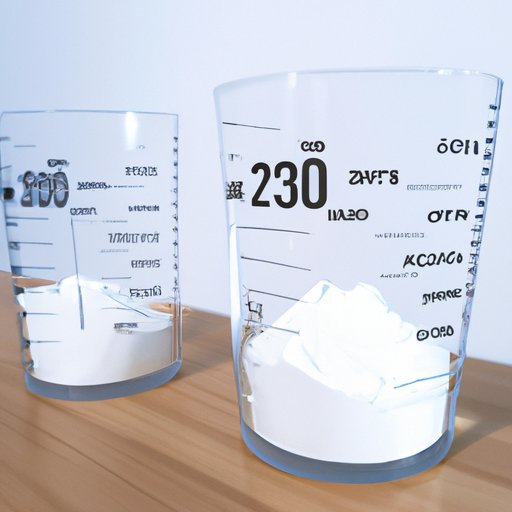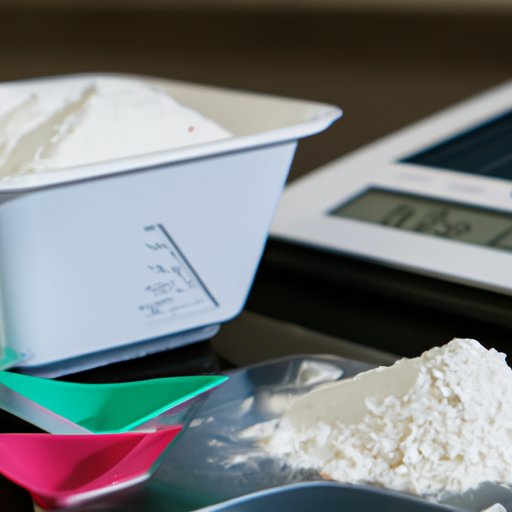Introduction
As any experienced baker knows, measuring ingredients accurately is crucial for achieving the perfect bake. One of the most common ingredients used in baking is flour, but determining how many ounces are in a cup can be quite confusing for many people. In this article, we’ll explore this topic and help you become a pro at measuring flour accurately!
Baking Basics: Understanding How Many Ounces of Flour are in a Cup
Before delving into how to measure flour accurately, it’s essential to understand the difference between volume and weight measurement. While cups are a common volume measurement unit, ounces are used for weight measurement. Flour measurement can be a little tricky due to its tendency to pack down and produce different weights. Understanding these basics is essential in achieving perfect bakes every time you step into your kitchen.
Measuring Flour: A Quick Guide to Converting Cups to Ounces
While there are many ways to measure flour, the most accurate method involves spooning the flour into the measuring cup and leveling it off with a straight edge. Here’s a quick conversion chart to make your life easier:
1 cup all-purpose flour = 4.25 ounces
3/4 cup all-purpose flour = 3.18 ounces
2/3 cup all-purpose flour = 2.83 ounces
1/2 cup all-purpose flour = 2.13 ounces
1/3 cup all-purpose flour = 1.42 ounces
1/4 cup all-purpose flour = 1.06 ounces
1 tablespoon all-purpose flour = 0.25 ounces
It’s worth noting that different types of flour such as all-purpose and bread flour may weigh differently and should be measured accordingly. All-purpose flour is the go-to flour for most baking needs.
The Art of Measuring Flour: How to Get the Perfect Amount Every Time
To achieve the most accurate measurement, you should avoid pressing down or packing down the flour, as this can result in a denser and heavier amount than the recipe calls for. Measuring flour accurately is especially crucial for baking recipes that need a precise amount. For example, bread recipes are highly sensitive to deviations in flour weight and can dramatically affect the final product.
Cup to Ounces Conversion: Flour Edition
It’s a common mistake to eyeball the amount of flour you need. The best practice is to use specific measuring tools such as a kitchen scale or measuring cups to get the perfect amount. Remember, the weight of flour can differ based on the brand. Suppose you’re looking for optimal results every time; consider investing in a digital kitchen scale. It will make things much easier for you in the long run.
Flour Measurement Made Easy: How Many Ounces are in a Cup?
To recap, measuring flour accurately is crucial when it comes to baking. Follow a specific recipe, and avoid eye-balling the quantities. Using accurate measuring tools such as a kitchen scale or measuring cups to convert cups of flour to ounces will ensure optimal baking results!

Mastering the Art of Baking: Understanding Flour Measurements
Understanding flour measurements is a fundamental aspect of baking. If you’re looking to take your baking skills to the next level, many resources are available. Cookbooks and online tutorials can offer expert advice and tips on how to master the art of baking. Moreover, practice makes perfect, so don’t hesitate to get into the kitchen and try out all that you’ve learned in this article!
Baking 101: Converting Cup Measurements to Ounces for Flour
By following this guide, you should have a better understanding of how to measure flour accurately. Remember, the key is to be precise and consistent every time you measure.
